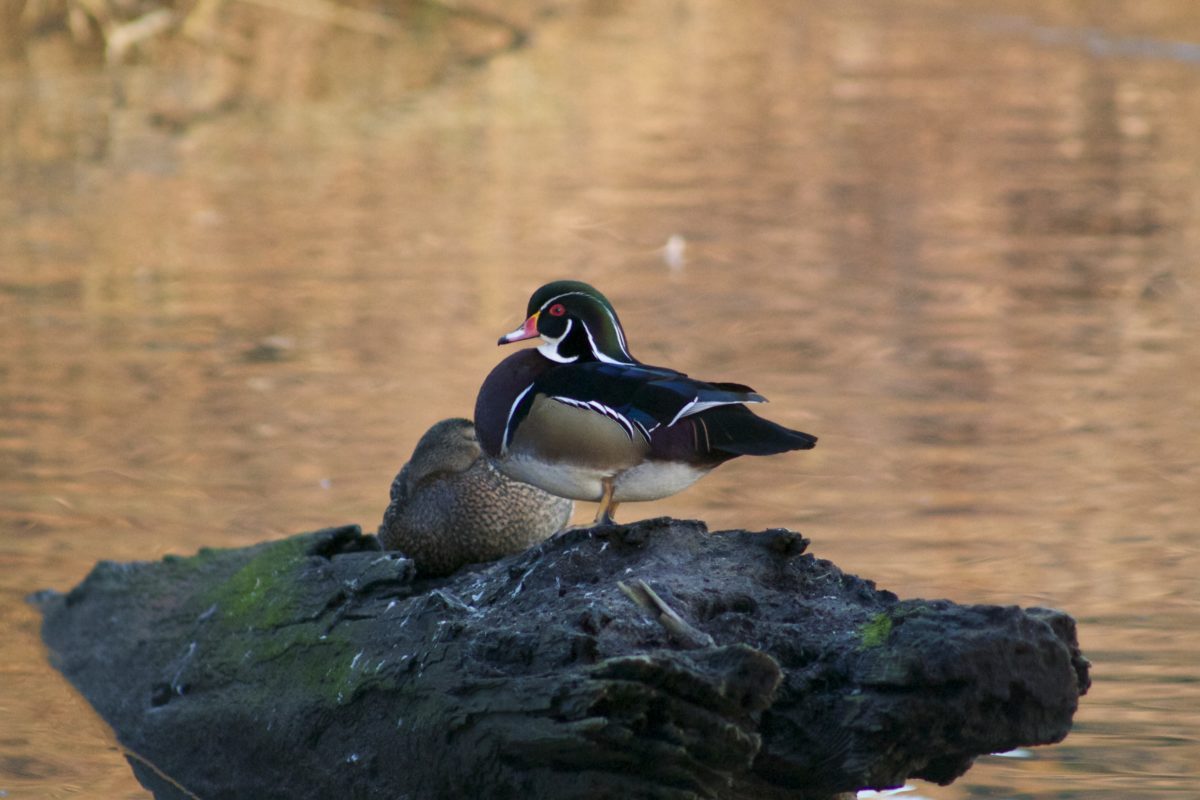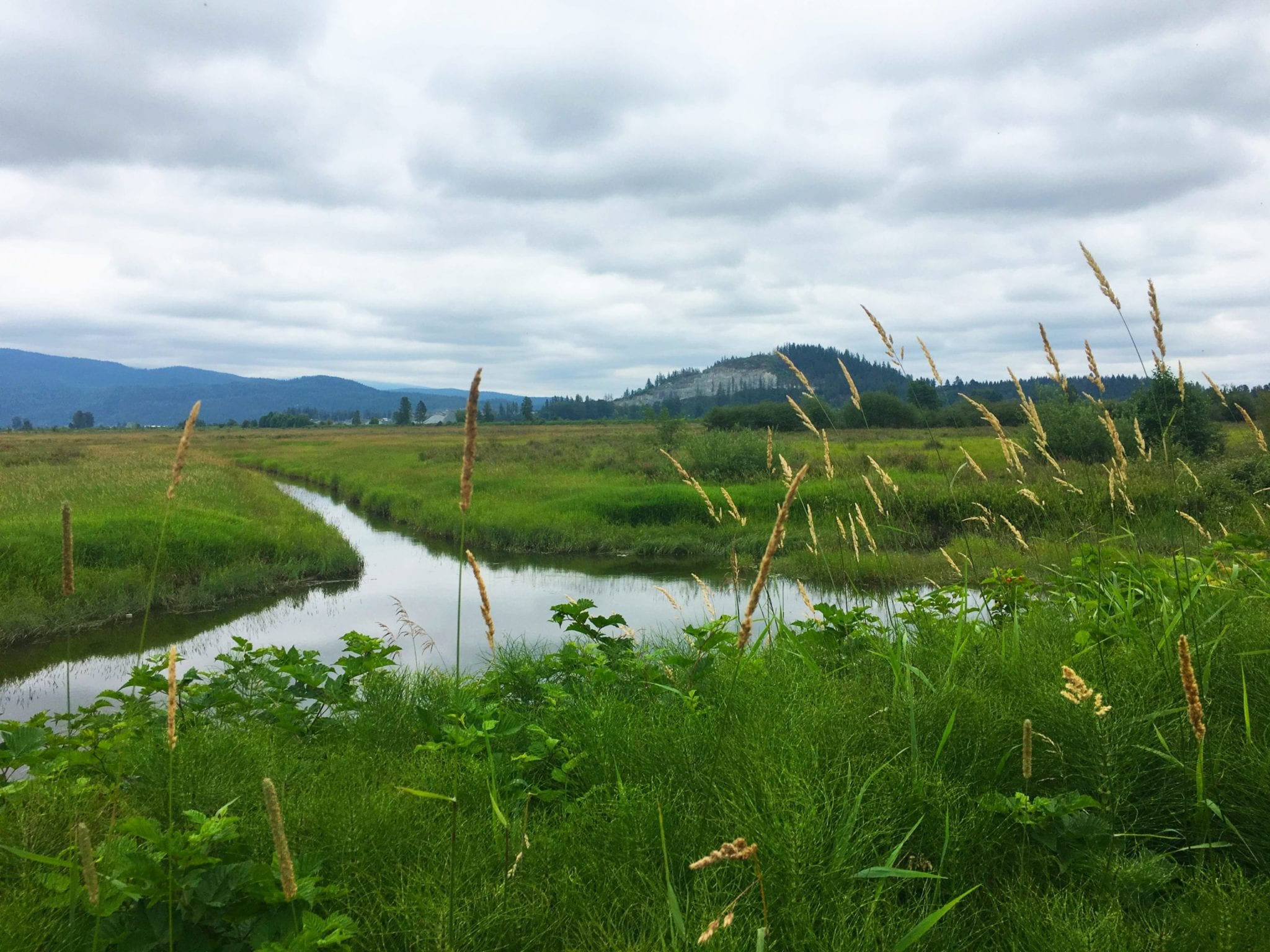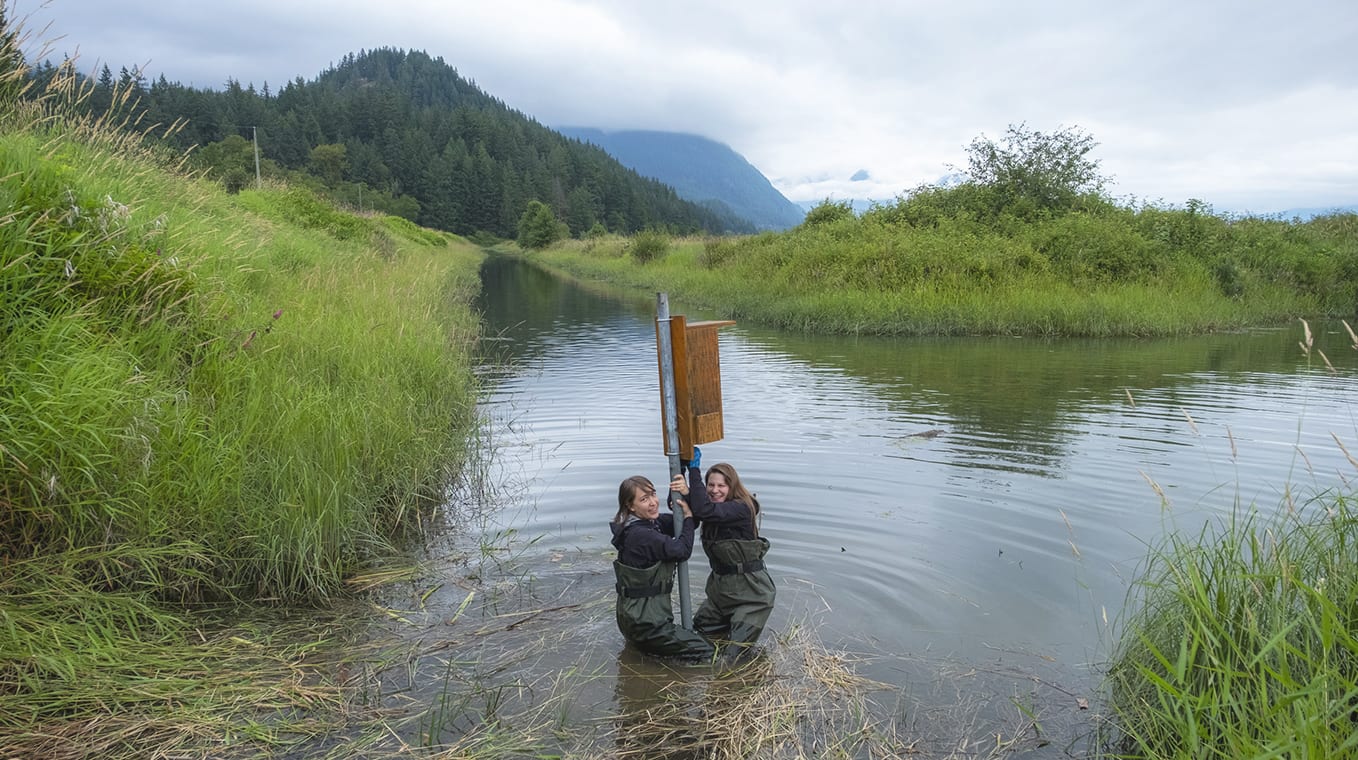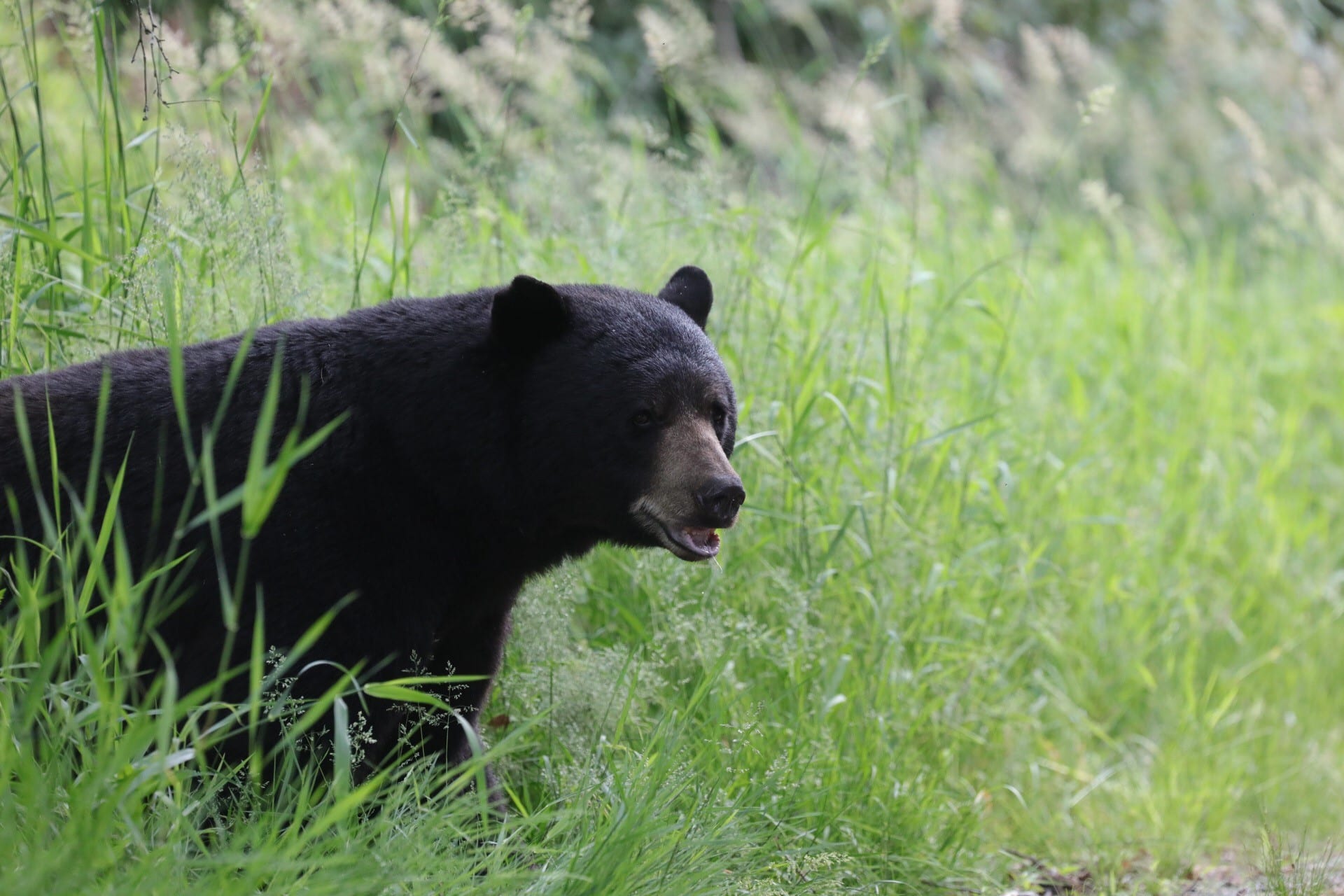
Addington Point Marsh
- Located north of the City of Port Coquitlam between Pitt Lake and the Fraser River
- Acquired: 1977
- Size: 258.4 hectares (638 acres)
- Online property map
Conservation Importance

The marsh supports over 200 bird species and 30 mammal species. The blue-listed Great Blue Heron, Trumpeter Swan, Osprey, and Bald Eagle are can be seen here. Of particular note is the presence of Greater Sandhill Cranes feeding and nesting in the adjacent Wildlife Management Area—one of only two nesting sites in the Lower Fraser Valley.
Rare plants found in the marsh are the Pointed Broom Sedge, Two-edged Water-starwort and Sessile-leaved Sandbar Willow.
The area features dyked and undyked wetlands on the alluvial plain created by sediment deposited by the tidally influenced Pitt River.
The marsh is surrounded by steeply sloping wooded hills rising to 165 meters above sea level to the northwest and by flat agricultural lands to the southwest. The Pitt River lies to the north and east.
Installing Wood Duck Boxes
In the summer of 2019, Nature Trust staff installed nesting boxes for Wood Ducks at Addington Point Marsh.
Wood Ducks are a migratory species that are considered one of most beautiful waterfowl in the world. And like many waterfowl in BC, they are mainly vegetarians and nest in the smallest of places.
They return to the Lower Mainland in the early spring to breed and raise their young. As cavity nesters, they like to build their homes in tree hollows, which can be very challenging to find in an open marsh.
Female Wood Ducks lay up to 15 eggs at a time and incubate them for 28 to 30 days. As soon as the chicks hatch, they leap from the nests into the water. Their mother stays with them until they develop flight feathers.

NTBC staff install nesting boxes | photo by Andrew Klaver
Access & Directions
Leaving Vancouver:
- Heading east on the Trans-Canada Hwy 1/BC-1 E, take exit 44 United Blvd leading onto the Maryhill Bypass/BC-7B.
- Stay on the bypass until you reach Broadway St where you turn left
- Continue onto the Coast Meridian Overpass onto Coast Meridian Road
- Turn right onto Prairie Road
- Turn left onto Cedar Road and then take Oliver Road (signs for Minnekhada Regional Park) to the end where there is a parking lot for the regional park.
The road into the park may not be open if the gate is locked to reduce bear-human interactions at certain times of the year, you can access the property on foot through the locked gate or via the trail system in Minnekhada Regional Park.
Activities & Events
This property offers good birding opportunities and is a popular destination for local birders and walkers.
American Black Bears also attract many visitors to the area. Note that there are many bears in the area during the summer and early fall feeding on berries. It is best to travel in groups and make noise as you walk.

Black Bear | photo by Norm Stack
Management & Stewardship
Each summer The Nature Trust of BC Lower Mainland Conservation Youth Crew undertakes restoration and maintenance projects on the property.
The Nature Trust leased the property to the Province in 1979, Ducks Unlimited Canada signed a conservation agreement in 1986 and the marsh formed part of the Pitt-Addington Wildlife Management Area in 1987.
In 2004, Ducks Unlimited Canada and the Province breached the dyke and returned the habitat to a freshwater intertidal system. This restoration project provided better water quality, salmon rearing habitat, increased invertebrates, and feeding and loafing habitat for waterfowl.
